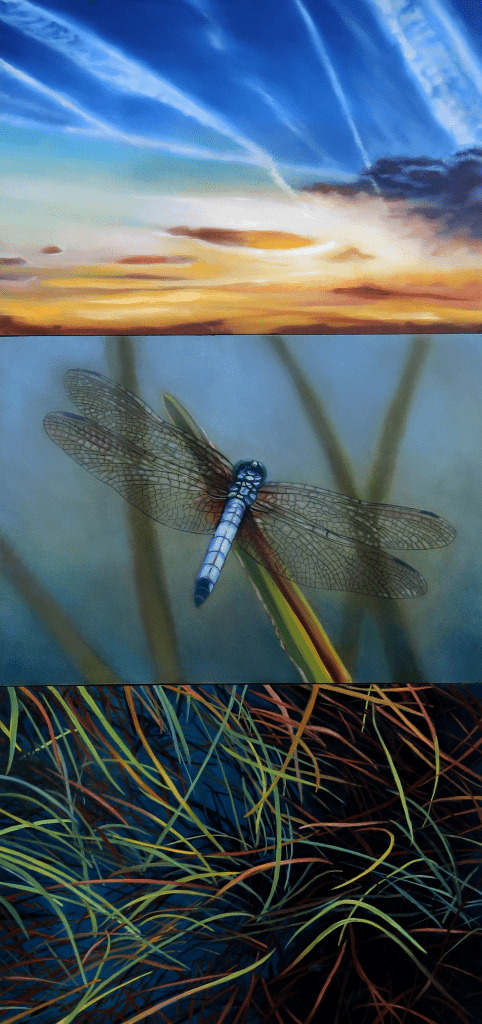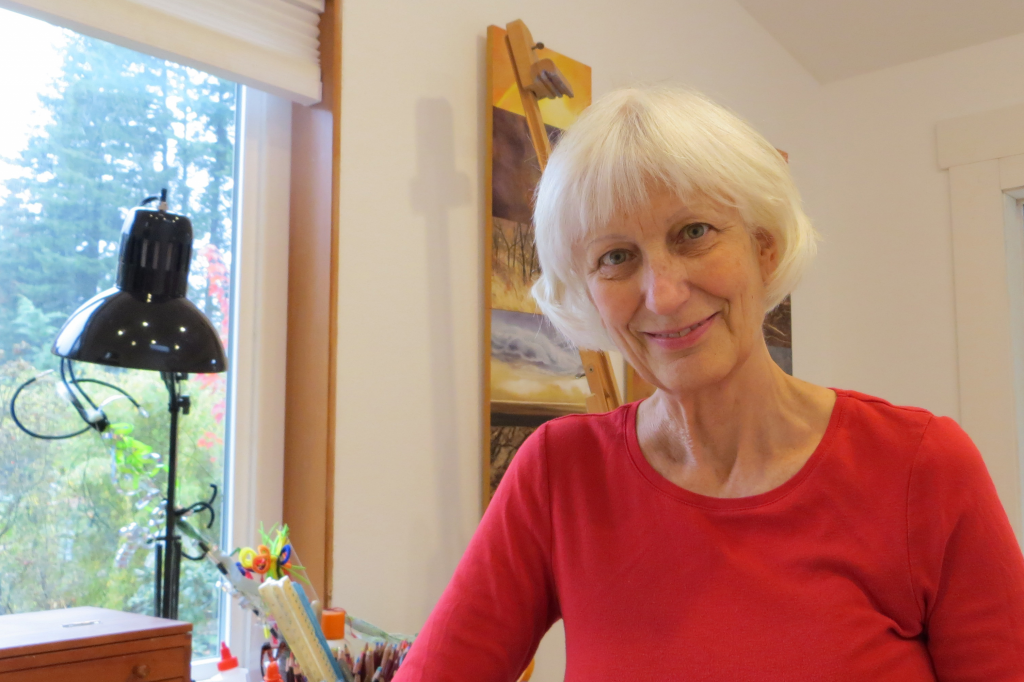By ALEC CLAYTON

Almost everyone familiar with the Olympia art scene knows – or should know – Susan Aurand’s work. For many years, beginning in 1974, she taught at The Evergreen State College, and over the years she’s shown her art in such local venues as Childhood’s End Gallery and South Puget Sound Community College (SPSCC). Aurand’s work is “realism meets experimentation meets mysterious,” according to Childhood’s End owner Richenda Richardson.
Typically, an Aurand painting is framed with a wooden structure like a small house, perhaps a birdhouse, with painted images inside and, often, small objects attached. The painted imagery is smoothly brushed, photorealistic in style and often depicts such natural objects as blades of grass, birds’ nests or clouds. Often there’s no connection between the images and objects, other than thematic: the objects generally relate to nature. Visually, they contrast with and are seen as adjacent, not continuous or connected, thereby giving her works a slightly surrealistic feel. They’re colorful and restful to the eye, and they’re often intriguing because the exact nature and meaning of the objects painted are left up to viewers’ interpretation.
Aurand was born in the Midwest and received her master’s in art from Ohio State University prior to moving to Olympia. She served as a tenured faculty member at Evergreen, teaching art history, ceramics, drawing, humanities, painting and sculpture until 2018. While there, she team-taught with teachers in many disciplines, including anthropology, biology, chemistry, ecology, geology, philosophy and psychology. She claims these experiences deepened her knowledge of the natural world, and they significantly informed her artworks over the years. She’s worked in a variety of media, from sculpture and printmaking to painting. Having said that, her images consistently reflect her passion for nature and philosophical inquiry into consciousness, metaphor, symbols and the nature of perception.
“If you could have a soulmate in teaching, Susan would be mine,” said fellow artist and longtime Evergreen faculty member Marilyn Frasca. “At Evergreen we’ve taught many interdisciplinary programs together,” Frasca adds, “always focused on students building confidence and competence in doing their own work … not our work. Now retired from teaching, we see and discuss each other’s drawings and paintings regularly and ponder the mysteries of being. She has an extraordinary eye for making an exhibition of images work and is admired by many for her ability to make and build almost everything. Her paintings are gorgeous and detail complex relationships between a soul and her environment. What else to say? … I adore her.”
Richardson said of Aurand, “We never know which media Susan will focus on next. She can work in oils, pastels, acrylic, graphite, mixed media, wood constructions, prints, any media that interests her. That’s one reason that her nature-informed work is so vital, full of energy and thoughtful.”
Jonathan Happ, fellow artist and gallerist at Childhood’s End, said, “Susan has an innovative approach to drawing and painting — constantly defying expectations without sacrificing quality.”
Aurand’s most recent shows include a two-person exhibition with painter Mary McCann at Childhood’s End and inclusion in the juror’s invitational exhibition at the Minneart Art Gallery at SPSCC. She’s working on a public art project for an elementary school in Quincy, Washington.


